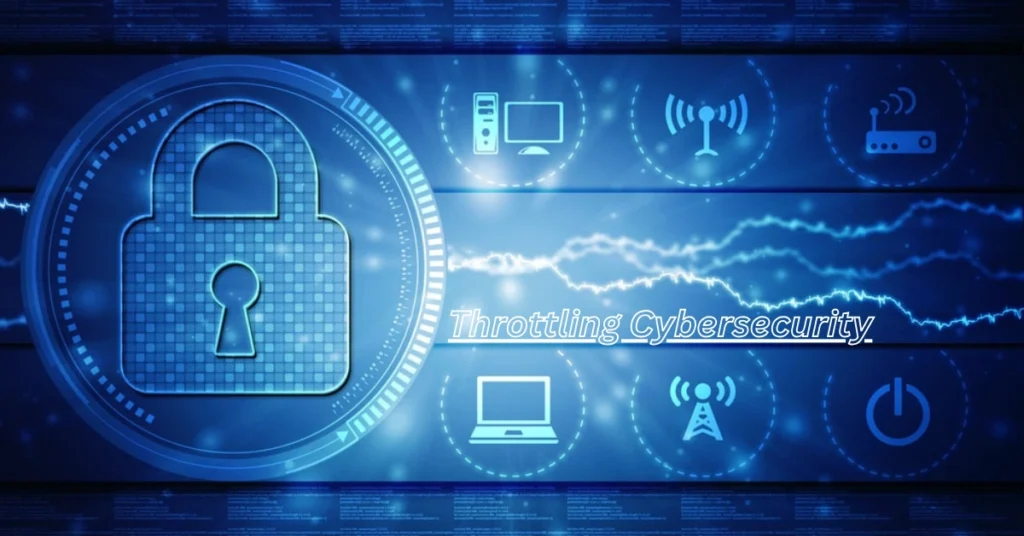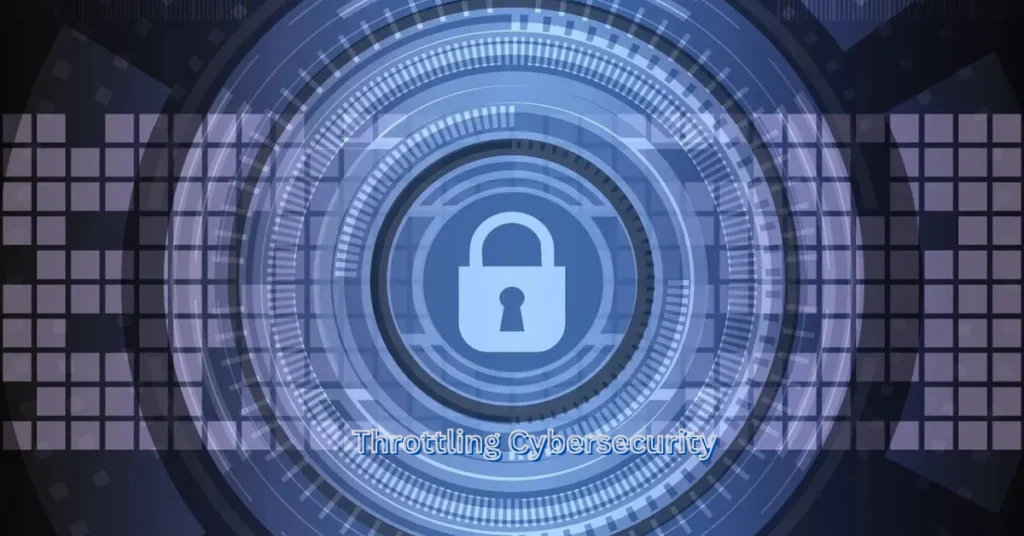Throttling Cybersecurity: A Key Strategy for Protection

Introduction
Throttling Cybersecurity is more crucial than ever, with cyber threats becoming increasingly sophisticated. One essential but often overlooked technique in Throttling Cybersecurity. This method helps protect systems from various attacks, ensuring that digital infrastructure remains secure and functional even under duress. In this article, we’ll dive into what throttling is, why it’s important, and how it can bolster your cybersecurity strategy.
What Is Throttling Cybersecurity?

Throttling cybersecurity refers to the controlled reduction of network traffic or system processes to prevent overload and mitigate potential threats. By intentionally limiting the speed or frequency of certain operations, throttling helps in managing traffic flow, ensuring that systems remain stable and secure.
How Does Throttling Work?
When implemented, throttling can either slow down or block traffic temporarily based on pre-set rules. For instance, if a network detects an unusually high volume of traffic from a specific IP address, it can throttle the speed of requests from that IP to prevent DDoS (Distributed Denial of Service) attacks.
Throttling can be applied at various layers of the network, including:
- Network Layer: Managing the flow of incoming traffic to ensure servers are not overwhelmed.
- Application Layer: Controlling API requests or login attempts to prevent brute-force attacks.
- Server Layer: Allocating server resources efficiently to handle peak loads without compromising security.
The Importance of Throttling for Cybersecurity
In the face of growing cyber threats, throttling plays an indispensable role in strengthening cybersecurity. Here are some key reasons why throttling is crucial:
1. Protection Against DDoS Attacks
DDoS attacks are a common method used by cybercriminals to flood a server with an overwhelming amount of traffic, causing service disruptions. Throttling helps mitigate this risk by reducing the number of requests that can be processed at a given time, effectively limiting the damage of such attacks.
2. Limiting Brute Force Attempts
Brute force attacks are another common threat in which attackers try numerous passwords or keys in quick succession to gain unauthorized access. Throttling restricts the speed at which login attempts can be made, making it harder for attackers to succeed.
3. Optimizing System Performance
Throttling can help balance security and performance, especially during periods of high demand. By preventing the system from being overloaded with requests, throttling ensures that critical services remain functional, even under stress.
4. Reducing Resource Waste
Throttling also helps optimize resource usage, particularly when there’s an influx of low-priority or suspicious traffic. By limiting the number of unnecessary requests, resources are allocated more efficiently, preserving the integrity of important operations.
Best Practices for Implementing Throttling

When implementing throttling as part of your cybersecurity strategy, there are several best practices to follow:
1. Set Appropriate Throttling Thresholds
To be effective, throttling thresholds need to be set based on normal traffic patterns. Setting thresholds too low could block legitimate users, while setting them too high may fail to provide sufficient protection against attacks. It’s crucial to monitor traffic regularly and adjust thresholds as needed.
2. Use Adaptive Throttling
Adaptive throttling adjusts the throttling rate based on real-time traffic data. This method allows for flexibility, ensuring that the system can adapt to fluctuating conditions and continue to protect against threats while maintaining performance.
3. Combine Throttling with Other Security Measures
Throttling should not be the only line of defense against cyber threats. It works best when combined with other security measures, such as firewalls, intrusion detection systems (IDS), and rate limiting. This layered approach ensures comprehensive protection against a variety of cyberattacks.
4. Continuously Monitor and Analyze Traffic
Regularly monitoring traffic patterns is essential for effective throttling. By analyzing traffic, you can identify any sudden spikes or unusual activity, allowing for quick adjustments to throttling settings to better handle emerging threats.
Benefits of Throttling Cybersecurity
Throttling offers several advantages to enhance your cybersecurity strategy:
- Improved Security: By reducing the impact of DDoS and brute-force attacks, throttling enhances overall network security.
- Better User Experience: While throttling controls malicious traffic, it ensures legitimate users still receive the services they need, improving their experience.
- Cost Efficiency: Throttling helps prevent costly downtime or system failures, reducing the need for infrastructure upgrades or emergency fixes.
- Resource Optimization: By limiting unnecessary or harmful traffic, throttling allows for more efficient use of system resources.
Challenges of Throttling

While throttling is a powerful tool, it does come with a few challenges:
- Impact on Legitimate Users (H3)
If thresholds are too restrictive, throttling can slow down legitimate users. It’s essential to fine-tune settings to ensure that throttling does not hinder user access or negatively impact performance. - Complexity in Management (H3)
Implementing throttling can add complexity to system configurations. Organizations need to carefully manage and monitor throttling rules to avoid conflicts with other security measures or business operations. - Risk of Over-Throttling (H3)
Over-throttling can lead to service disruptions. It’s important to strike the right balance to avoid blocking necessary traffic while still defending against malicious attacks.
Throttling vs. Other Cybersecurity Measures
Here’s how throttling compares to other common cybersecurity techniques:
| Security Measure | Throttling | Firewall | Intrusion Detection System (IDS) |
|---|---|---|---|
| Purpose | Control traffic flow and reduce attacks | Block malicious traffic | Detect and alert on unauthorized activities |
| Best For | DDoS, brute force, high traffic | Malicious IPs or specific traffic types | Identifying suspicious behavior |
| User Impact | Can slow down legitimate users | May block legitimate users if misconfigured | May cause alerts and minor disruptions |
Conclusion
Throttling is a critical yet often underrated component of a comprehensive cybersecurity strategy. By limiting the flow of traffic during high-demand periods or in response to potential threats, throttling helps prevent system overloads and protects against attacks like DDoS and brute-force attempts. When combined with other security measures, throttling enhances your ability to safeguard sensitive data and maintain system performance.
FAQs
1. What is Throttling Cybersecurity?
Throttling is the process of intentionally slowing down or limiting network traffic to prevent system overload and mitigate security threats.
2. How does throttling help prevent DDoS attacks?
By reducing the speed or frequency of requests from suspicious sources, throttling ensures that malicious traffic cannot overwhelm a server during a DDoS attack.
3. Can throttling affect legitimate users?
Yes, if thresholds are too strict, throttling may slow down legitimate users. However, careful configuration can ensure that only malicious traffic is limited, without affecting user experience.
4. How do I set the right throttling thresholds?
Thresholds should be based on normal traffic patterns. Regular monitoring and adjustments are necessary to ensure that legitimate traffic is not hindered while maintaining protection against attacks.
For more information, visit our detailed guide on Waethicc.